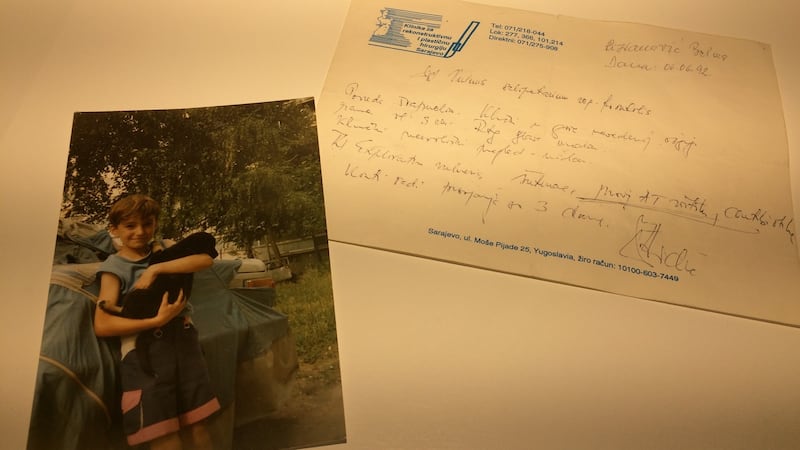Senad Kaliman is too young to have enjoyed Mount Trebevic's crowning moment, and in its darkest days he steered well clear of the wooded peak that overlooks his hometown, Sarajevo.
Kaliman was born two years after Sarajevo hosted the 1984 Winter Olympics, when tens of thousands of Yugoslavs and foreign visitors watched the world’s best bobsledders hurtle down a serpentine track on the slopes of Trebevic.
When he was six, Yugoslav and then Bosnian Serb soldiers besieged mostly Muslim Sarajevo, shelling it from Trebevic and killing and maiming civilians in its streets with sniper fire. At least one warlord murdered and buried his Sarajevan victims on the hillside, and minefields encircled the Olympic venue.
Next Wednesday, a United Nations court will rule on whether former Bosnian Serb general Ratko Mladic is responsible for the 44-month siege of Sarajevo – the longest such ordeal to be inflicted on a major city in modern history and for the 1995 massacre of some 8,000 unarmed Bosnian Muslims at Srebrenica.
The verdict will remind the world of the daily misery and frequent horror of the siege, which killed more than 11,000 people and left the city’s 500,000 residents struggling for survival without regular supplies of food, water and power.
But Sarajevo never forgets, and some of the most vivid memories of wartime belong to Bosnians of Kaliman’s generation, who recall in almost surreal detail both the terror of those years and the flashes of carefree, childish fun that would briefly banish the fear.
‘See soldiers moving’
“When the war was starting we looked up at Trebevic through my older brother’s telescope and we could see soldiers moving around here,” Kaliman says as he gazes down on a sunny Sarajevo, its minarets and church spires fringed in a fine autumn mist.
“After a while you got used to shelling and snipers, to hiding in the basement, and to hearing that someone you knew had been killed or injured. When the Serbs shelled our national library (in 1992) and two million books were destroyed, the black ash from the burning pages fell in our street.”
Kaliman’s mother helped distribute food aid from their house, and he remembers eating US army rations.
“They had different numbers, and I think the best one was number 11, because it included a nice piece of candy,” he recalls.
His father, a truck driver, delivered water from a local well around their district, and when supplies were cut people collected rainwater for washing and boiled and filtered it for drinking
“In a huge storm people rushed outside to a drainpipe that was gushing with water, to try to fill up their canisters,” recalls Kaliman, who now works in a hotel.
In 1993, Bosnian Muslims built an 800-metre-long tunnel near the United Nations-held airport on the edge of Sarajevo, which provided a lifeline to safer territory and allowed supplies – including weapons – to reach Sarajevo.
“My dad was going out through the tunnel in 1994, the year the World Cup was in America,” Kaliman says.
“The only thing I asked for was a pack of chewing gum with football stickers in it.”
Memories of Bosnians
In Sarajevo’s old town, where strong coffee is brewed in long-handled copper pots and street stalls sell little bottles of freshly squeezed pomegranate juice, a museum now preserves the memories of Bosnians like Kaliman.
The War Childhood Museum has collected several thousand items from people who grew up during the conflict, and displays a selection of them alongside brief explanations from their owners of why the object is special to them.

The artefacts are eclectic: a frilly blue-and-white dress – the only new clothing that a girl called Vesna received during the 1992-5 war – hangs next to a plastic canister that a boy called Amir remembers his father using to collect water.
Alongside a battered guitar, drumsticks and ballet shoes sits a little porcelain dog, which 12-year-old Maja was given by her best friend Selma Milic before she was killed in 1992.
Nearby stands a makeshift metal stove. It is treasured by its owner, Sanja, because it helped most of her family survive a war that killed her 10-year-old brother, shot by a sniper while collecting grass for their pet parrot.
The museum mourns Sarajevo’s suffering, but also celebrates its survival.
Beside a photograph of a young girl called Belma holding a big black cat is a note from the doctor who treated her when she was wounded.
“Diagnosis: survived by a whisker,” it reads.
“Prognosis: a fresh start at five years old!”












